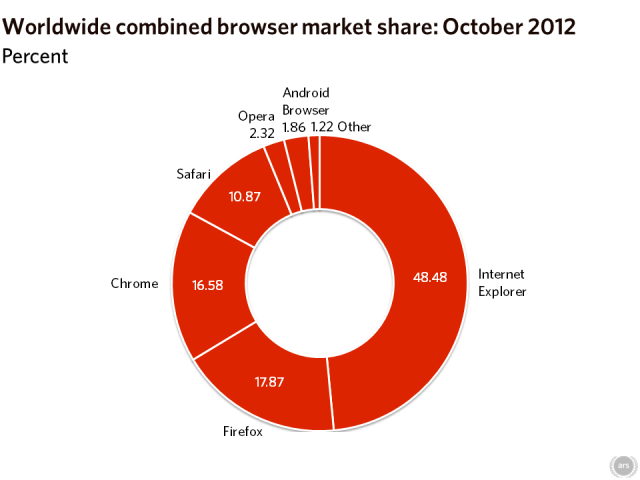
Mozilla Firefox has—barely—dipped below 20 percent market share for the second time in six months, after an October that saw Microsoft Internet Explorer grow, Google Chrome fall, and mobile browsing account for 10 percent of all Web traffic for the first time ever.
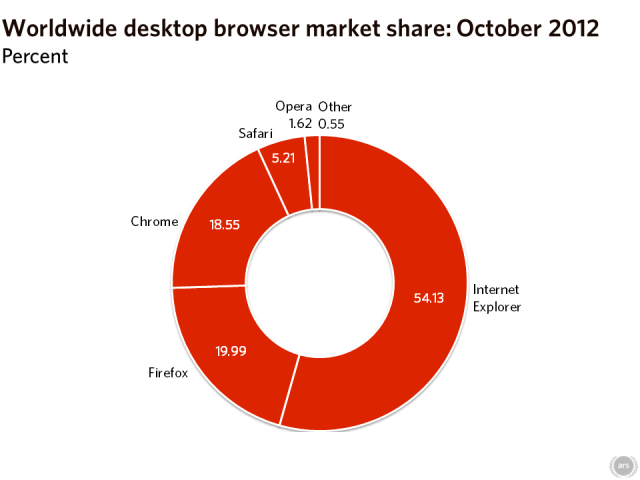
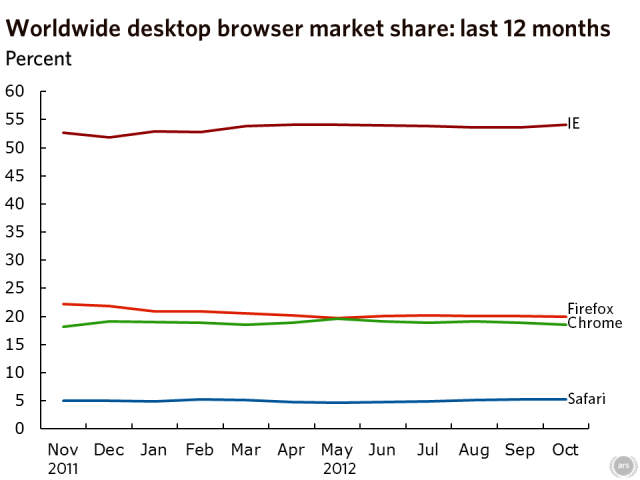
Internet Explorer was up half a point to 54.13 percent share, its highest level since September 2011. Chrome was down 0.31 points to 18.55 percent, hitting a one year low after its third consecutive month of losses. Firefox fell 0.09 points to 19.99 percent. Safari was down 0.05 points to 5.21 percent, Opera was essentially unchanged, up 0.01 points to 1.63 percent.
After holding steady for several months, desktop browsing dropped to its lowest all-time level. Mobile browsers took a 10.3 percent share, pushing the desktop to below 90 percent. For all the column inches spent talking about smartphones and tablets, and all the time taken accommodating them, they're still only a bit player on the Web, albeit a bit player that's growing fast.
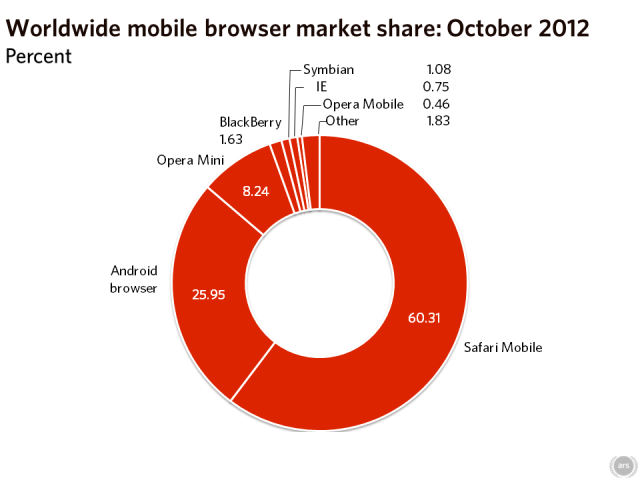
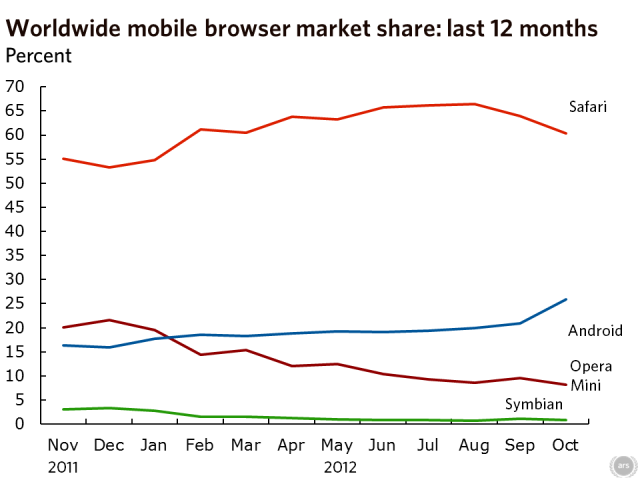
Within that mobile market, Safari on iOS is a dominant force. Its share was sharply down, dropping 3.7 points to 60.31 percent. Opera Mini also fell 1.31 points to 8.24 percent. Safari and Opera's loss was Android's gain: Android browser gained 5.01 points reaching a new high of 25.95 percent.
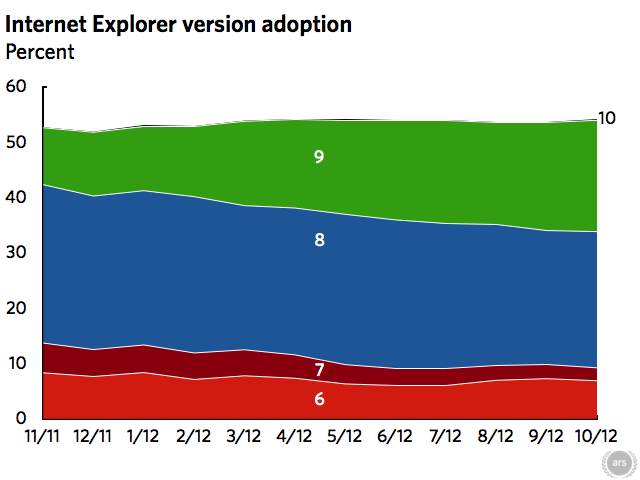
The slow upgrading of Internet Explorer users continues. Internet Explorer 9 broke through 20 percent for the first time: Internet Explorer 9 now has more users than all versions of Chrome, and more users than all versions of Firefox. Internet Explorer 10 is still essentially invisible. It shipped with Windows 8 on October 26th, but won't be available to Windows 7 users any time soon.

Firefox's users continue to be split between a significant (30 percent) minority that's sticking with old unsupported versions (both rapid release-era versions and old, extended support 3.x versions), and a majority that is, for the most part, upgrading regularly. It's clear now that usage of Firefox 10—which includes both users of the insecure mainline Firefox 10 release that have opted not to upgrade for whatever reason, and users of the Extended Support Release, that contains security fixes—is at a very low level, just 0.47 percent of all Web users. This suggests that the corporate response to Mozilla's rapid release schedule for Firefox was an overreaction: if there are corporate users of Firefox, they seem to be either on the rapid release treadmill (albeit possibly reluctantly), or else opting for the old and insecure 3.x branch.

Chrome's stragglers still haven't gone away, but account for a much smaller share of its user base than they do Firefox; around 14 percent of Chrome users are on obsolete versions of the browser.
reader comments
132